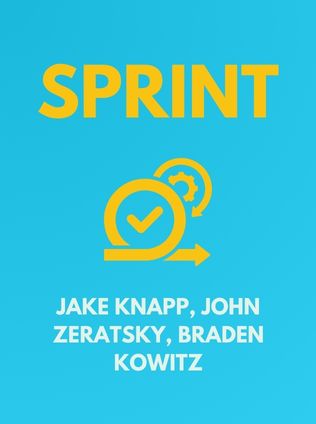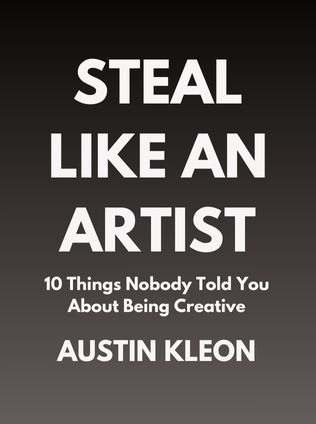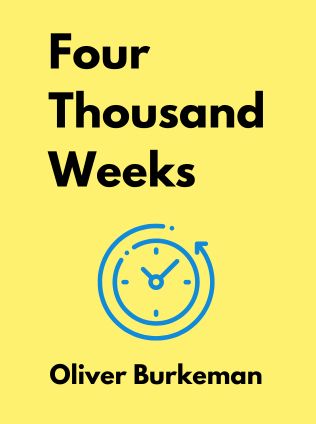
Sprint
How to Solve Big Problems and Test New Ideas in Just Five Days
By Jake Knapp, John Zeratsky, and Braden Kowitz
Published 03/2016
About the Author
Jake Knapp is a designer and thought leader best known for inventing the Design Sprint process, which has revolutionized the way teams approach product development. Knapp developed this methodology while working at Google, where he focused on maximizing efficiency and impact in product design. His goal was to create a system that would allow teams to quickly test and validate ideas, reducing the risk of failure and accelerating the innovation process.
Knapp’s work gained further prominence when he moved to Google Ventures (GV), where he facilitated over a hundred sprints for companies like Slack, Airbnb, and Spotify. These experiences allowed him to refine the Design Sprint, making it a versatile tool that could be applied across different industries and contexts. His colleagues at GV, John Zeratsky and Braden Kowitz, played a crucial role in this refinement, contributing their own expertise in design, productivity, and team dynamics. Together, they have influenced the way modern companies approach innovation, emphasizing the importance of rapid prototyping and customer feedback.
In addition to his work on Design Sprints, Knapp is also the co-author of Make Time, a book that explores strategies for time management and personal productivity. This book, co-written with John Zeratsky, reflects Knapp’s broader interest in efficiency and his belief that time is the most valuable resource in both professional and personal life.
Main Idea
The core idea of Jake Knapp’s Design Sprint is to compress the traditional product development cycle into a five-day process, enabling teams to move quickly from concept to prototype. This methodology is particularly valuable in today’s fast-paced business environment, where the ability to test and iterate on ideas rapidly can be the difference between success and failure. The Design Sprint is not just about speed; it’s about focusing intense effort on solving a specific problem, gathering real customer feedback, and making informed decisions about the future of a product.
The Sprint process is grounded in principles of design thinking, a methodology that emphasizes empathy with users, creativity in generating solutions, and a systematic approach to testing and refining ideas. By integrating these principles into a structured five-day framework, Knapp’s Design Sprint offers a practical, repeatable process that teams can use to tackle complex challenges. The process is iterative, meaning that teams can run multiple sprints to continually refine their ideas, ensuring that the final product is not only innovative but also meets the needs of its users.
Table of Contents
- Day 1: Planning the Sprint
- Day 2: Creating a Design
- Day 3: Making Decisions
- Day 4: Creating the Prototype
- Day 5: Testing the Prototype
- Final Thoughts
Day 1: Planning the Sprint
Identify Goals and Questions
The first step in a Design Sprint is to clearly define the goal of your project. This goal serves as the North Star for the entire sprint, guiding the team’s efforts and ensuring that everyone is aligned. The goal should be ambitious yet achievable within the five-day timeframe. For example, a team from a bookstore might set a goal to develop a personalized book recommendation tool. This goal reflects a broader aspiration to enhance customer experience through technology, but it is also specific enough to focus the team’s efforts during the sprint.
Once the goal is established, the team must anticipate potential challenges that could hinder their progress. These challenges are reframed as questions that the sprint will seek to answer. For instance, if the team is concerned about whether an automated recommendation service can match the personalized touch of a bookstore employee, the corresponding question might be, "Can an automated recommendation service provide the same quality of recommendations as a bookstore employee?" By identifying these critical questions early, the team ensures that the sprint stays focused on addressing the most important issues.
“The best way to predict the future is to design it.” – Jake Knapp
Plot the Customer’s Experience
After defining the goal and questions, the next step is to map out the customer’s journey with the product. This exercise involves creating a flowchart that details each step the customer will take, from their first interaction with the product to the final outcome. For the bookstore team, this journey might begin with a customer discovering the recommendation tool on their website and end with the customer purchasing books that were recommended to them.
This flowchart serves as a visual representation of the customer’s experience, helping the team identify potential pain points and opportunities for improvement. Each step in the journey is carefully considered to ensure that the product meets customer needs and expectations. The team also identifies key moments where the customer’s experience could be enhanced or where challenges might arise, allowing them to focus their efforts where they will have the most impact.
Expand Knowledge with Expert Interviews
To ensure that the team has all the necessary insights, they conduct short interviews with experts from different fields. These experts could include colleagues from other departments, such as customer service, technical engineering, or marketing. The purpose of these interviews is to fill in any knowledge gaps and to gain valuable perspectives that might otherwise be overlooked.
Each team member records important points on sticky notes, phrased as “How Might We…” questions. This phrasing encourages a solution-focused mindset, shifting the focus from problems to opportunities. For example, if the team learns that it’s difficult to make a web-based recommendation tool feel personal, they might write a question like, “How might we introduce a personalized human element into an online recommendation tool?” These questions are then organized into themes, which help the team prioritize their efforts for the rest of the sprint.
Sign up for FREE and get access to 1,400+ books summaries.
You May Also Like
The Life-Changing Magic of Tidying Up
The Japanese Art of Decluttering and Organizing
By Marie KondoThe Lean Startup
How Today's Entrepreneurs Use Continuous Innovation to Create Radically Successful Businesses
By Eric RiesWho Moved My Cheese?
An Amazing Way to Deal with Change in Your Work and in Your Life
By Spencer Johnson, M.D.Make Your Bed
Little Things That Can Change Your Life...And Maybe the World
By William H. McRaven



















